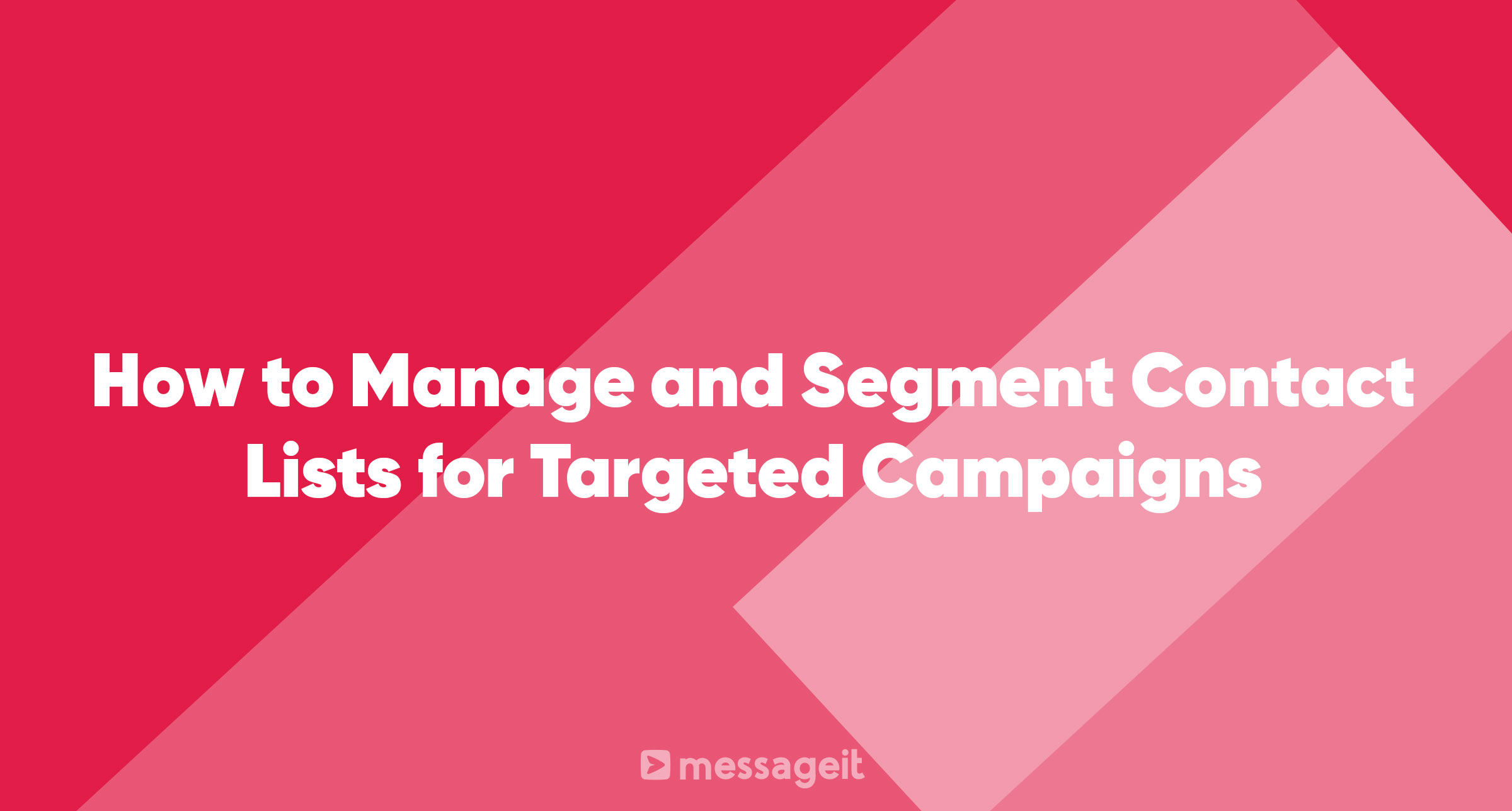Effective contact list management and segmentation are essential for running successful email marketing campaigns. Segmentation allows you to tailor your messages to specific groups within your contact list, increasing the relevance of your emails and, consequently, their effectiveness. Here's how to manage and segment your contact lists for targeted campaigns:
1. Centralize Your Contacts:
First, ensure that all your contacts are centralized within a reliable customer relationship management (CRM) system or email marketing platform. This central repository makes it easier to manage and segment your contact lists.
2. Maintain a Clean List:
Regularly clean your contact list by removing invalid or bounced email addresses, unsubscribed contacts, and outdated information. A clean list ensures that your emails reach the right audience and avoids spam complaints.
3. Collect Relevant Data:
Gather relevant data about your contacts, such as demographics, location, purchase history, and engagement behavior. The more data you have, the more effectively you can segment your list.
4. Segment Based on Demographics:
Demographic segmentation involves categorizing contacts based on attributes like age, gender, income, job title, and more. This segmentation helps you send tailored messages to specific customer groups.
5. Segment Based on Behavior:
Behavioral segmentation considers how contacts interact with your emails, website, and products. Segments may include active customers, cart abandoners, recent purchasers, and inactivity triggers. Tailor messages based on each group's actions.
6. Segment by Location:
Segmenting by location is particularly useful for businesses with physical locations or regional offers. Tailor messages to cater to the preferences and needs of contacts in specific geographical areas.
7. Use Preferences and Interests:
Leverage contact preferences and interests to segment your list. This allows you to send content that aligns with individual choices, increasing engagement.
8. Implement RFM Segmentation:
Recency, Frequency, Monetary (RFM) segmentation categorizes customers based on their recency of purchase, frequency of engagement, and monetary value. This strategy helps you target high-value customers and re-engage lapsed ones.
9. Create Custom Segments:
Custom segments involve defining your own criteria for segmentation. For example, you might create a segment of contacts who attended a specific webinar or downloaded a particular resource.
10. Consider the Sales Funnel:
Align your segments with the stages of the sales funnel. Create segments for leads at the awareness, consideration, and decision stages. Tailor your content to move them through the funnel.
11. Monitor Engagement:
Regularly analyze your email engagement metrics to determine which segments are most responsive. Adjust your strategies based on the results.
12. A/B Test Your Segments:
Perform A/B testing within segments to determine the most effective messaging, subject lines, and calls to action. This data-driven approach can improve your campaigns over time.
13. Personalize Content:
Personalize your email content based on the segment's characteristics and behaviors. Use their names and reference their preferences to make the emails more engaging.
14. Automate Campaigns:
Utilize marketing automation tools to send targeted emails based on segmentation criteria, making it easier to deliver timely and relevant content.
15. Track and Adapt:
Keep a close eye on the results of your campaigns, and continually adjust your segmentation strategies based on performance data. Successful segmentation is an ongoing process.
By effectively managing and segmenting your contact lists, you can send more relevant, engaging, and personalized email campaigns. This not only improves your email marketing success but also enhances the overall customer experience and relationship with your brand.
